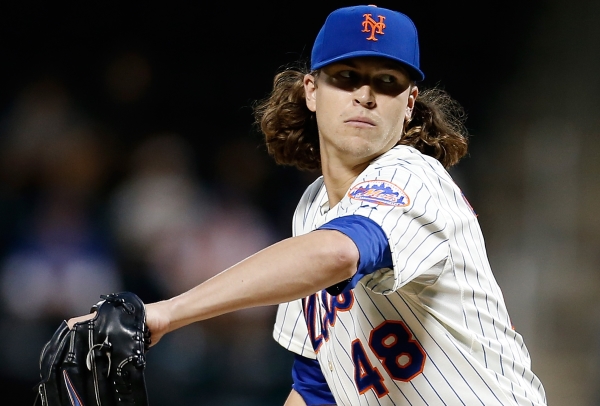DFS MLB Strategy: he Right Pitcher for the Right Situation

Published: May 24, 2015

This season I have had the privilege of writing the DFS Pitching Coach twice a week for FantasyAlarm. In that article, I (or Howard Bender) scour the statistics to find the best DFS pitching plays for each day. We break those pitchers down into four categories: investing heavily, moderately priced, middle class and bargain basement.
The Pitching Coach is a lot of fun to write, and I use it to inform my DFS play even when I’m not the one writing it. The thing about the Pitching Coach, or any fantasy advice for that matter, is it only works if it is used the correct way. I think it is useful to take the time today to discuss my approach to DFS pitching and specifically how I use the Pitching Coach in my DFS play.
When I was a young pup, I would get sucked into trendy young upside plays. Guys like Carlos Rodon and Taijuan Walker have a place in DFS, but it should not be anchoring your lineup. Nowadays when I identify bargain basement plays it is almost exclusively for use in my second starting pitcher spot, and usually only for GPPs. I liked both Mike Foltynewicz and Carlos Frias Sunday, but I did not play them both together. Unsurprisingly, only one of those calls worked out, which is why bargain basement guys are usually best used as one pitcher in a two-pitcher GPP. If both cheap guys have great games like Foltynewicz did you will end up way ahead of the curve. The problem is the savings of playing two cheap pitchers almost never makes up for the high risk you have to take on.
For the most part, I treat middle class pitchers the same way I treat bargain basement guys. I am fine putting one in my lineup, but I usually want to pair him with someone from one of the top two categories. The main difference is I am usually okay playing middle class pitcher in a cash game if I trust him or if I have to pay up for my hitters. The middle class pitchers are usually safer than the bargain basement variety, which makes them a viable cash game option.
I usually think about the moderately priced and investing heavily pitchers the same way I do my SP1 in full-season leagues: I want the cheapest borderline-aces I can find. In my full-season drafts, this meant I waited on starting pitchers and wound up with Carlos Carrasco, Jake Odorizzi, Drew Smyly, James Shields and Tyson Ross on a lot of my teams. They may not be aces, but they are close enough for my purposes, and waiting for them allowed me to load up on hitters. If there are not any moderately priced guys I like, I am fine with playing one or two from the investing heavily category, but I am equally content playing two moderately priced guys I like. Just in the past week guys like Mike Bolsinger, Gio Gonzalez, Jacob deGrom and Jeff Samardzija have performed like aces at a discount price. I feel like that happens enough to make the moderately priced guys worth pursuing.
That being said, you can almost always put together a decent lineup while investing heavily in two starting pitchers. Sometimes on a short slate it is nearly impossible, but it is usually worth trying. More often than not when I settle on two expensive aces, I am pleasantly surprised with the quality of the lineup I can put together. It may mean settling on an extra table setter or two, but I am usually fine with that.
